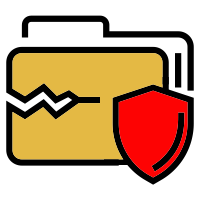Company Details
juniper-networks
11,851
831,939
5112
juniper.net
0
JUN_6775708
In-progress

Juniper Networks Company CyberSecurity Posture
juniper.netJuniper Networks is leading the revolution in networking, making it one of the most exciting technology companies in Silicon Valley today. Since being founded by Pradeep Sindhu, Dennis Ferguson, and Bjorn Liencres nearly 20 years ago, Juniper’s sole mission has been to create innovative products and solutions that meet the growing demands of the connected world. Juniper Networks [NYSE: JNPR] is headquartered in Sunnyvale, California, with over 9,000 employees in 50 countries and nearly $5 billion in revenue. Our customers include the top 100 global service providers and 30,000 enterprises, including the Global Fortune 100 as well as hundreds of federal, state and local government agencies and higher educational organizations. At Juniper Networks, we believe the network is the single greatest vehicle for knowledge, understanding, and human advancement that the world has ever known. Now more than ever, the world needs network innovation to connect ideas and unleash our full potential. Juniper is taking a new approach to the network — one that is intelligent, agile, secure and open to any vendor and any network environment. To learn more about Juniper, our products, and our vision for the decade ahead, visit our site at https://www.juniper.net.
Company Details
juniper-networks
11,851
831,939
5112
juniper.net
0
JUN_6775708
In-progress
Between 600 and 649

 Juniper Networks Global Score (TPRM)
Juniper Networks Global Score (TPRM)XXXX

Description: Juniper Networks reported an incident on December 11, 2024, where multiple customers experienced suspicious behavior on their Session Smart Network (SSN) platforms. These systems were infected with Mirai malware, which employed the devices in DDoS attacks, causing network disruptions. The malware exploited devices still using default passwords, facilitating unauthorized access and remote command execution. Juniper Networks outlined that signs of Mirai's presence included port scanning, failed SSH logins, spikes in outbound traffic, and erratic behavior. The company recommended enhancing security by changing default credentials, monitoring logs, using firewalls and IDS/IPS, and keeping firmware updated to mitigate the risk of future attacks.
Description: Mandiant researchers discovered custom backdoors deployed by China-linked espionage group UNC3886 on outdated Juniper Networks Junos OS routers. These TINYSHELL-based backdoors aimed for long-term persistence and stealth, targeting internal networking infrastructure and ISP routers. The backdoors imitated legitimate binaries and bypassed Junos OS security mechanisms, which could potentially lead to privileged access abuse, network authentication service compromises, and further covert operations within affected systems. The incident highlights significant vulnerabilities within critical networking devices and represents a strategic threat to the defense, technology, and telecommunications sectors.
Description: On December 11, 2024, Juniper Networks identified a security breach where multiple customers' Session Smart Router (SSR) products running default passwords were compromised. The attackers leveraged the devices to conduct Distributed Denial-of-Service (DDoS) attacks as part of the Mirai botnet's activity. This security event resulted in unusual network behavior, including port scanning, failed SSH logins, spikes in traffic, and connections from known malicious IP addresses. Juniper Networks has issued recommendations to customers for strengthening security practices and mitigating future risks. This incident underscores the importance of strong password policies and regular security monitoring to prevent exploitation of network devices. No data leaks or critical threats to personal, financial, or regional economic security were reported.
Description: On December 11, 2024, Juniper Networks reported that a Mirai botnet was targeting Session Smart Router (SSR) products by exploiting devices with default passwords. The malicious actors compromised the SSR devices and used them to launch DDoS attacks against other devices. The systems infected with the Mirai malware displayed signs of unusual activity such as port scanning, failed SSH logins, spikes in outbound traffic, and connections from malevolent IP addresses. Juniper Networks urged customers to bolster security by changing default credentials, using strong passwords, monitoring access logs, utilizing firewalls and IDS/IPS, and updating firmware to mitigate against such threats.
Description: Juniper Networks issued an alert regarding a Mirai botnet attack on Session Smart Router (SSR) devices with default credentials. The attack, detected on December 11, 2024, compromised SSR products and facilitated DDoS attacks using the infected devices. The Mirai botnet exploited default passwords to enable remote command execution and initiate various forms of malicious activity, particularly DDoS attacks. Unusual port scans, frequent SSH login failures, traffic spikes, and erratic device behaviors were indicators of the infection. The incident necessitated a reinforcement of security measures, such as updating default credentials, strengthening passwords, regular monitoring of access logs, deployment of firewalls, and up-to-date firmware to mitigate further risks.
Description: In mid-2024, China-linked cyber espionage group UNC3886 targeted outdated Juniper Networks Junos OS MX routers with custom backdoors. The deployment of TINYSHELL-based backdoors, which allowed for stealthy, persistent access, showed a sophisticated understanding of system internals and posed a significant threat. This attack rendered the organization vulnerable to long-term espionage activities, primarily affecting the defense, technology, and telecommunications sectors in the US and Asia. The security incident not only undermined the integrity of Juniper Networks' devices but also put sensitive customer and employee data at risk.


Juniper Networks has 127.27% more incidents than the average of same-industry companies with at least one recorded incident.
Juniper Networks has 56.25% more incidents than the average of all companies with at least one recorded incident.
Juniper Networks reported 1 incidents this year: 0 cyber attacks, 0 ransomware, 0 vulnerabilities, 1 data breaches, compared to industry peers with at least 1 incident.
Juniper Networks cyber incidents detection timeline including parent company and subsidiaries

Juniper Networks is leading the revolution in networking, making it one of the most exciting technology companies in Silicon Valley today. Since being founded by Pradeep Sindhu, Dennis Ferguson, and Bjorn Liencres nearly 20 years ago, Juniper’s sole mission has been to create innovative products and solutions that meet the growing demands of the connected world. Juniper Networks [NYSE: JNPR] is headquartered in Sunnyvale, California, with over 9,000 employees in 50 countries and nearly $5 billion in revenue. Our customers include the top 100 global service providers and 30,000 enterprises, including the Global Fortune 100 as well as hundreds of federal, state and local government agencies and higher educational organizations. At Juniper Networks, we believe the network is the single greatest vehicle for knowledge, understanding, and human advancement that the world has ever known. Now more than ever, the world needs network innovation to connect ideas and unleash our full potential. Juniper is taking a new approach to the network — one that is intelligent, agile, secure and open to any vendor and any network environment. To learn more about Juniper, our products, and our vision for the decade ahead, visit our site at https://www.juniper.net.

Catalyzing the era of pervasive intelligence, Synopsys delivers trusted and comprehensive silicon to systems design solutions, from electronic design automation to silicon IP and system verification and validation. We partner closely with semiconductor and systems customers across a wide range of

More than one billion people around the world use Instagram, and we’re proud to be bringing them closer to the people and things they love. Instagram inspires people to see the world differently, discover new interests, and express themselves. Since launching in 2010, our community has grown at a r

Rakuten Group, Inc. (TSE: 4755) is a global technology leader in services that empower individuals, communities, businesses and society. Founded in Tokyo in 1997 as an online marketplace, Rakuten has expanded to offer services in e-commerce, fintech, digital content and communications to 2 billion m
Baidu is a leading AI company with strong Internet foundation, driven by our mission to “make the complicated world simpler through technology”. Founded in 2000 as a search engine platform, we were an early adopter of artificial intelligence in 2010. Since then, we have established a full AI stack,
Databricks is the Data and AI company. More than 10,000 organizations worldwide — including Block, Comcast, Condé Nast, Rivian, Shell and over 60% of the Fortune 500 — rely on the Databricks Data Intelligence Platform to take control of their data and put it to work with AI. Databricks is headquarte
The Bosch Group is a leading global supplier of technology and services. It employs roughly 417,900 associates worldwide (as of December 31, 2024). According to preliminary figures, the company generated sales of 90.5 billion euros in 2024. Its operations are divided into four business sectors: Mobi

Intuit is a global technology platform that helps our customers and communities overcome their most important financial challenges. Serving millions of customers worldwide with TurboTax, QuickBooks, Credit Karma and Mailchimp, we believe that everyone should have the opportunity to prosper and we wo

The Bosch Group’s strategic objective is to create solutions for a connected life. Bosch improves quality of life worldwide with innovative products and services that are "Invented for life" and spark enthusiasm. Podcast: http://bit.ly/beyondbosch Imprint: https://www.bosch.us/corporate-informatio

**Snowflake is proud to be the Official Data Collaboration Provider for LA28 and Team USA.** Snowflake delivers the AI Data Cloud — a global network where thousands of organizations mobilize data with near-unlimited scale, concurrency, and performance. Inside the AI Data Cloud, organizations unite
.png)
Zeeshan Hadi, Country Manager UAE & Africa at HPE Networking, spoke to CNME Editor Mark Forker, where he explained in detail how the...
Hewlett Packard Enterprise (HPE) Networking was part of a recent proof-of-concept (PoC) that demonstrated the deployment of quantum-safe...
Secure, intelligent, automated solutions well-positioned to support the Kingdom's Vision 2030 goals.
Westcon-Comstor, a global technology provider and specialist distributor, today announced that it has been recognised as a 2024 Partner of...
Hewlett-Packard Enterprise Company (NYSE:HPE) is one of the Top AI Stocks Taking Wall Street by Storm. On August 5, the company announced...
HPE to showcase combined secure networking portfolio, for the first time since acquisition of Juniper Networks. HPE extends mission-critical...
HPE is adding to its secure networking portfolio with a handful of AI-powered security announcements, including technology that can work...
At Black Hat 2025, HPE showcases new data protection capabilities, SASE copilot, and a unified portfolio following its Juniper Networks...
We came across a bullish thesis on Juniper Networks, Inc. on Stock Region Research's Substack by Stock Region. In this article, we will...

Explore insights on cybersecurity incidents, risk posture, and Rankiteo's assessments.
The official website of Juniper Networks is http://www.juniper.net.
According to Rankiteo, Juniper Networks’s AI-generated cybersecurity score is 601, reflecting their Poor security posture.
According to Rankiteo, Juniper Networks currently holds 0 security badges, indicating that no recognized compliance certifications are currently verified for the organization.
According to Rankiteo, Juniper Networks is not certified under SOC 2 Type 1.
According to Rankiteo, Juniper Networks does not hold a SOC 2 Type 2 certification.
According to Rankiteo, Juniper Networks is not listed as GDPR compliant.
According to Rankiteo, Juniper Networks does not currently maintain PCI DSS compliance.
According to Rankiteo, Juniper Networks is not compliant with HIPAA regulations.
According to Rankiteo,Juniper Networks is not certified under ISO 27001, indicating the absence of a formally recognized information security management framework.
Juniper Networks operates primarily in the Software Development industry.
Juniper Networks employs approximately 11,851 people worldwide.
Juniper Networks presently has no subsidiaries across any sectors.
Juniper Networks’s official LinkedIn profile has approximately 831,939 followers.
Juniper Networks is classified under the NAICS code 5112, which corresponds to Software Publishers.
Yes, Juniper Networks has an official profile on Crunchbase, which can be accessed here: https://www.crunchbase.com/organization/juniper-networks.
Yes, Juniper Networks maintains an official LinkedIn profile, which is actively utilized for branding and talent engagement, which can be accessed here: https://www.linkedin.com/company/juniper-networks.
As of November 27, 2025, Rankiteo reports that Juniper Networks has experienced 6 cybersecurity incidents.
Juniper Networks has an estimated 26,565 peer or competitor companies worldwide.
Incident Types: The types of cybersecurity incidents that have occurred include Vulnerability, Breach, Cyber Attack and Ransomware.
Detection and Response: The company detects and responds to cybersecurity incidents through an remediation measures with change default credentials, remediation measures with monitor logs, remediation measures with use firewalls and ids/ips, remediation measures with keep firmware updated, and containment measures with changing default credentials, using strong passwords, monitoring access logs, utilizing firewalls and ids/ips, updating firmware, and remediation measures with strengthening security practices, remediation measures with mitigating future risks, and communication strategy with issued recommendations to customers, and enhanced monitoring with regular security monitoring, and containment measures with updating default credentials, containment measures with strengthening passwords, containment measures with regular monitoring of access logs, containment measures with deployment of firewalls, containment measures with up-to-date firmware..
Title: Mirai Malware Infection on Juniper Networks SSN Platforms
Description: Juniper Networks reported an incident on December 11, 2024, where multiple customers experienced suspicious behavior on their Session Smart Network (SSN) platforms. These systems were infected with Mirai malware, which employed the devices in DDoS attacks, causing network disruptions. The malware exploited devices still using default passwords, facilitating unauthorized access and remote command execution. Juniper Networks outlined that signs of Mirai's presence included port scanning, failed SSH logins, spikes in outbound traffic, and erratic behavior. The company recommended enhancing security by changing default credentials, monitoring logs, using firewalls and IDS/IPS, and keeping firmware updated to mitigate the risk of future attacks.
Date Detected: December 11, 2024
Type: Malware Infection
Attack Vector: Unauthorized Access and Remote Command Execution
Vulnerability Exploited: Default Passwords
Motivation: DDoS Attacks
Title: Mirai Botnet Targeting Juniper Networks SSR Products
Description: On December 11, 2024, Juniper Networks reported that a Mirai botnet was targeting Session Smart Router (SSR) products by exploiting devices with default passwords. The malicious actors compromised the SSR devices and used them to launch DDoS attacks against other devices. The systems infected with the Mirai malware displayed signs of unusual activity such as port scanning, failed SSH logins, spikes in outbound traffic, and connections from malevolent IP addresses. Juniper Networks urged customers to bolster security by changing default credentials, using strong passwords, monitoring access logs, utilizing firewalls and IDS/IPS, and updating firmware to mitigate against such threats.
Date Detected: 2024-12-11
Date Publicly Disclosed: 2024-12-11
Type: DDoS Attack
Attack Vector: Default Passwords
Vulnerability Exploited: Default Passwords
Threat Actor: Mirai Botnet
Motivation: DDoS Attacks
Title: Juniper Networks SSR Compromise
Description: On December 11, 2024, Juniper Networks identified a security breach where multiple customers' Session Smart Router (SSR) products running default passwords were compromised. The attackers leveraged the devices to conduct Distributed Denial-of-Service (DDoS) attacks as part of the Mirai botnet's activity. This security event resulted in unusual network behavior, including port scanning, failed SSH logins, spikes in traffic, and connections from known malicious IP addresses. Juniper Networks has issued recommendations to customers for strengthening security practices and mitigating future risks. This incident underscores the importance of strong password policies and regular security monitoring to prevent exploitation of network devices. No data leaks or critical threats to personal, financial, or regional economic security were reported.
Date Detected: 2024-12-11
Type: DDoS Attack
Attack Vector: Default Passwords
Vulnerability Exploited: Weak Password Policies
Threat Actor: Mirai Botnet
Motivation: Conduct DDoS Attacks
Title: Mirai Botnet Attack on Juniper Networks SSR Devices
Description: Juniper Networks issued an alert regarding a Mirai botnet attack on Session Smart Router (SSR) devices with default credentials. The attack, detected on December 11, 2024, compromised SSR products and facilitated DDoS attacks using the infected devices. The Mirai botnet exploited default passwords to enable remote command execution and initiate various forms of malicious activity, particularly DDoS attacks. Unusual port scans, frequent SSH login failures, traffic spikes, and erratic device behaviors were indicators of the infection. The incident necessitated a reinforcement of security measures, such as updating default credentials, strengthening passwords, regular monitoring of access logs, deployment of firewalls, and up-to-date firmware to mitigate further risks.
Date Detected: 2024-12-11
Type: DDoS Attack
Attack Vector: Default Passwords
Vulnerability Exploited: Default Credentials
Threat Actor: Mirai Botnet
Motivation: Malicious Activity, DDoS Attacks
Title: UNC3886 Attack on Juniper Networks Junos OS Routers
Description: Mandiant researchers discovered custom backdoors deployed by China-linked espionage group UNC3886 on outdated Juniper Networks Junos OS routers. These TINYSHELL-based backdoors aimed for long-term persistence and stealth, targeting internal networking infrastructure and ISP routers. The backdoors imitated legitimate binaries and bypassed Junos OS security mechanisms, which could potentially lead to privileged access abuse, network authentication service compromises, and further covert operations within affected systems. The incident highlights significant vulnerabilities within critical networking devices and represents a strategic threat to the defense, technology, and telecommunications sectors.
Type: Espionage
Attack Vector: Custom Backdoors
Vulnerability Exploited: Outdated Junos OS routers
Threat Actor: UNC3886
Motivation: Long-term persistence and stealth
Title: UNC3886 Targets Juniper Networks Routers with Custom Backdoors
Description: China-linked cyber espionage group UNC3886 targeted outdated Juniper Networks Junos OS MX routers with custom backdoors. The deployment of TINYSHELL-based backdoors, which allowed for stealthy, persistent access, showed a sophisticated understanding of system internals and posed a significant threat. This attack rendered the organization vulnerable to long-term espionage activities, primarily affecting the defense, technology, and telecommunications sectors in the US and Asia. The security incident not only undermined the integrity of Juniper Networks' devices but also put sensitive customer and employee data at risk.
Date Detected: mid-2024
Type: Cyber Espionage
Attack Vector: Custom Backdoors
Vulnerability Exploited: Outdated Juniper Networks Junos OS MX routers
Threat Actor: UNC3886
Motivation: Espionage
Common Attack Types: The most common types of attacks the company has faced is Breach.
Identification of Attack Vectors: The company identifies the attack vectors used in incidents through Default Passwords, Default Passwords, Default Passwords, Default Credentials, Outdated Juniper Networks Junos OS routers and Outdated Juniper Networks Junos OS MX routers.

Systems Affected: Session Smart Network (SSN) platforms
Operational Impact: Network Disruptions

Systems Affected: SSR Devices

Systems Affected: Session Smart Router (SSR) products
Operational Impact: Unusual network behaviorPort scanningFailed SSH loginsSpikes in trafficConnections from known malicious IP addresses

Systems Affected: SSR Devices

Systems Affected: Juniper Networks Junos OS routers
Operational Impact: Privileged access abuseNetwork authentication service compromisesCovert operations

Data Compromised: Customer data, Employee data
Systems Affected: Juniper Networks Junos OS MX routers
Brand Reputation Impact: Significant
Commonly Compromised Data Types: The types of data most commonly compromised in incidents are Customer Data, Employee Data and .

Entity Name: Juniper Networks
Entity Type: Company
Industry: Technology
Customers Affected: Multiple

Entity Name: Juniper Networks
Entity Type: Company
Industry: Technology

Entity Name: Juniper Networks
Entity Type: Company
Industry: Networking and Cybersecurity

Entity Name: Juniper Networks
Entity Type: Organization
Industry: Networking

Entity Name: Juniper Networks
Entity Type: Company
Industry: Technology

Entity Name: Juniper Networks
Entity Type: Organization
Industry: Defense, Technology, Telecommunications
Location: USAsia

Remediation Measures: Change default credentialsMonitor logsUse firewalls and IDS/IPSKeep firmware updated

Containment Measures: Changing default credentials, using strong passwords, monitoring access logs, utilizing firewalls and IDS/IPS, updating firmware

Remediation Measures: Strengthening security practicesMitigating future risks
Communication Strategy: Issued recommendations to customers
Enhanced Monitoring: Regular security monitoring

Containment Measures: Updating Default CredentialsStrengthening PasswordsRegular Monitoring of Access LogsDeployment of FirewallsUp-to-date Firmware

Type of Data Compromised: Customer data, Employee data
Sensitivity of Data: High
Prevention of Data Exfiltration: The company takes the following measures to prevent data exfiltration: Change default credentials, Monitor logs, Use firewalls and IDS/IPS, Keep firmware updated, , Strengthening security practices, Mitigating future risks, .
Handling of PII Incidents: The company handles incidents involving personally identifiable information (PII) through by changing default credentials, using strong passwords, monitoring access logs, utilizing firewalls and ids/ips, updating firmware, updating default credentials, strengthening passwords, regular monitoring of access logs, deployment of firewalls, up-to-date firmware and .

Lessons Learned: Importance of strong password policies, Regular security monitoring

Recommendations: Enhance security by changing default credentials, Monitor logs, Use firewalls and IDS/IPS, Keep firmware updatedEnhance security by changing default credentials, Monitor logs, Use firewalls and IDS/IPS, Keep firmware updatedEnhance security by changing default credentials, Monitor logs, Use firewalls and IDS/IPS, Keep firmware updatedEnhance security by changing default credentials, Monitor logs, Use firewalls and IDS/IPS, Keep firmware updated

Recommendations: Bolster security by changing default credentials, using strong passwords, monitoring access logs, utilizing firewalls and IDS/IPS, and updating firmware to mitigate against such threats.

Recommendations: Strengthening security practices, Mitigating future risksStrengthening security practices, Mitigating future risks
Key Lessons Learned: The key lessons learned from past incidents are Importance of strong password policies,Regular security monitoring.
Implemented Recommendations: The company has implemented the following recommendations to improve cybersecurity: Bolster security by changing default credentials, using strong passwords, monitoring access logs, utilizing firewalls and IDS/IPS and and updating firmware to mitigate against such threats..

Source: Mandiant Research
Additional Resources: Stakeholders can find additional resources on cybersecurity best practices at and Source: Mandiant Research.
Communication of Investigation Status: The company communicates the status of incident investigations to stakeholders through Issued Recommendations To Customers.

Customer Advisories: Issued recommendations to customers
Advisories Provided: The company provides the following advisories to stakeholders and customers following an incident: were Issued Recommendations To Customers and .

Entry Point: Default Passwords

Entry Point: Default Passwords

Entry Point: Default Passwords

Entry Point: Default Credentials

Entry Point: Outdated Juniper Networks Junos OS routers
Backdoors Established: TINYSHELL-based backdoors
High Value Targets: Internal Networking Infrastructure, Isp Routers,
Data Sold on Dark Web: Internal Networking Infrastructure, Isp Routers,

Entry Point: Outdated Juniper Networks Junos OS MX routers
Backdoors Established: ['TINYSHELL-based backdoors']
High Value Targets: Defense, Technology, Telecommunications,
Data Sold on Dark Web: Defense, Technology, Telecommunications,

Root Causes: Default Passwords
Corrective Actions: Change Default Credentials, Monitor Logs, Use Firewalls And Ids/Ips, Keep Firmware Updated,

Root Causes: Default Passwords
Corrective Actions: Changing default credentials, using strong passwords, monitoring access logs, utilizing firewalls and IDS/IPS, updating firmware

Root Causes: Weak Password Policies,
Corrective Actions: Strengthening Security Practices, Regular Security Monitoring,

Root Causes: Default Credentials
Corrective Actions: Updating Default Credentials, Strengthening Passwords, Regular Monitoring Of Access Logs, Deployment Of Firewalls, Up-To-Date Firmware,

Root Causes: Outdated Junos Os Routers,

Root Causes: Outdated Juniper Networks Junos OS MX routers
Post-Incident Analysis Process: The company's process for conducting post-incident analysis is described as Regular Security Monitoring, .
Corrective Actions Taken: The company has taken the following corrective actions based on post-incident analysis: Change Default Credentials, Monitor Logs, Use Firewalls And Ids/Ips, Keep Firmware Updated, , Changing default credentials, using strong passwords, monitoring access logs, utilizing firewalls and IDS/IPS, updating firmware, Strengthening Security Practices, Regular Security Monitoring, , Updating Default Credentials, Strengthening Passwords, Regular Monitoring Of Access Logs, Deployment Of Firewalls, Up-To-Date Firmware, .
Last Attacking Group: The attacking group in the last incident were an Mirai Botnet, Mirai Botnet, Mirai Botnet, UNC3886 and UNC3886.
Most Recent Incident Detected: The most recent incident detected was on December 11, 2024.
Most Recent Incident Publicly Disclosed: The most recent incident publicly disclosed was on 2024-12-11.
Most Significant Data Compromised: The most significant data compromised in an incident were Customer Data, Employee Data and .
Most Significant System Affected: The most significant system affected in an incident was Session Smart Router (SSR) products and SSR Devices and Juniper Networks Junos OS routers and Juniper Networks Junos OS MX routers.
Containment Measures in Most Recent Incident: The containment measures taken in the most recent incident were Changing default credentials, using strong passwords, monitoring access logs, utilizing firewalls and IDS/IPS, updating firmware and Updating Default CredentialsStrengthening PasswordsRegular Monitoring of Access LogsDeployment of FirewallsUp-to-date Firmware.
Most Sensitive Data Compromised: The most sensitive data compromised in a breach were Employee Data and Customer Data.
Most Significant Lesson Learned: The most significant lesson learned from past incidents was Regular security monitoring.
Most Significant Recommendation Implemented: The most significant recommendation implemented to improve cybersecurity was Strengthening security practices, Keep firmware updated, Use firewalls and IDS/IPS, Mitigating future risks, Monitor logs, Enhance security by changing default credentials, Bolster security by changing default credentials, using strong passwords, monitoring access logs, utilizing firewalls and IDS/IPS and and updating firmware to mitigate against such threats..
Most Recent Source: The most recent source of information about an incident is Mandiant Research.
Most Recent Customer Advisory: The most recent customer advisory issued was an Issued recommendations to customers.
Most Recent Entry Point: The most recent entry point used by an initial access broker were an Outdated Juniper Networks Junos OS routers, Default Passwords, Outdated Juniper Networks Junos OS MX routers and Default Credentials.
Most Significant Root Cause: The most significant root cause identified in post-incident analysis was Default Passwords, Default Passwords, Weak Password Policies, Default Credentials, Outdated Junos OS routers, Outdated Juniper Networks Junos OS MX routers.
Most Significant Corrective Action: The most significant corrective action taken based on post-incident analysis was Change default credentialsMonitor logsUse firewalls and IDS/IPSKeep firmware updated, Changing default credentials, using strong passwords, monitoring access logs, utilizing firewalls and IDS/IPS, updating firmware, Strengthening security practicesRegular security monitoring, Updating Default CredentialsStrengthening PasswordsRegular Monitoring of Access LogsDeployment of FirewallsUp-to-date Firmware.
.png)
Angular is a development platform for building mobile and desktop web applications using TypeScript/JavaScript and other languages. Prior to versions 19.2.16, 20.3.14, and 21.0.1, there is a XSRF token leakage via protocol-relative URLs in angular HTTP clients. The vulnerability is a Credential Leak by App Logic that leads to the unauthorized disclosure of the Cross-Site Request Forgery (XSRF) token to an attacker-controlled domain. Angular's HttpClient has a built-in XSRF protection mechanism that works by checking if a request URL starts with a protocol (http:// or https://) to determine if it is cross-origin. If the URL starts with protocol-relative URL (//), it is incorrectly treated as a same-origin request, and the XSRF token is automatically added to the X-XSRF-TOKEN header. This issue has been patched in versions 19.2.16, 20.3.14, and 21.0.1. A workaround for this issue involves avoiding using protocol-relative URLs (URLs starting with //) in HttpClient requests. All backend communication URLs should be hardcoded as relative paths (starting with a single /) or fully qualified, trusted absolute URLs.
Forge (also called `node-forge`) is a native implementation of Transport Layer Security in JavaScript. An Uncontrolled Recursion vulnerability in node-forge versions 1.3.1 and below enables remote, unauthenticated attackers to craft deep ASN.1 structures that trigger unbounded recursive parsing. This leads to a Denial-of-Service (DoS) via stack exhaustion when parsing untrusted DER inputs. This issue has been patched in version 1.3.2.
Forge (also called `node-forge`) is a native implementation of Transport Layer Security in JavaScript. An Integer Overflow vulnerability in node-forge versions 1.3.1 and below enables remote, unauthenticated attackers to craft ASN.1 structures containing OIDs with oversized arcs. These arcs may be decoded as smaller, trusted OIDs due to 32-bit bitwise truncation, enabling the bypass of downstream OID-based security decisions. This issue has been patched in version 1.3.2.
Suricata is a network IDS, IPS and NSM engine developed by the OISF (Open Information Security Foundation) and the Suricata community. Prior to versions 7.0.13 and 8.0.2, working with large buffers in Lua scripts can lead to a stack overflow. Users of Lua rules and output scripts may be affected when working with large buffers. This includes a rule passing a large buffer to a Lua script. This issue has been patched in versions 7.0.13 and 8.0.2. A workaround for this issue involves disabling Lua rules and output scripts, or making sure limits, such as stream.depth.reassembly and HTTP response body limits (response-body-limit), are set to less than half the stack size.
Suricata is a network IDS, IPS and NSM engine developed by the OISF (Open Information Security Foundation) and the Suricata community. In versions from 8.0.0 to before 8.0.2, a NULL dereference can occur when the entropy keyword is used in conjunction with base64_data. This issue has been patched in version 8.0.2. A workaround involves disabling rules that use entropy in conjunction with base64_data.

Get company history
















Every week, Rankiteo analyzes billions of signals to give organizations a sharper, faster view of emerging risks. With deeper, more actionable intelligence at their fingertips, security teams can outpace threat actors, respond instantly to Zero-Day attacks, and dramatically shrink their risk exposure window.
Identify exposed access points, detect misconfigured SSL certificates, and uncover vulnerabilities across the network infrastructure.
Gain visibility into the software components used within an organization to detect vulnerabilities, manage risk, and ensure supply chain security.
Monitor and manage all IT assets and their configurations to ensure accurate, real-time visibility across the company's technology environment.
Leverage real-time insights on active threats, malware campaigns, and emerging vulnerabilities to proactively defend against evolving cyberattacks.




